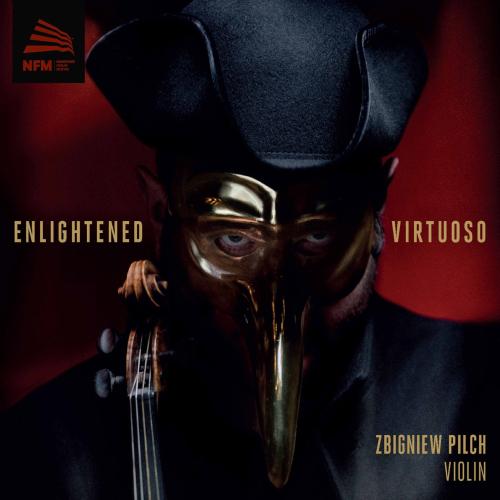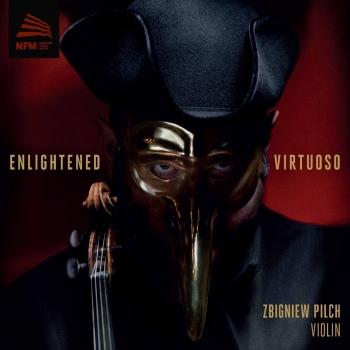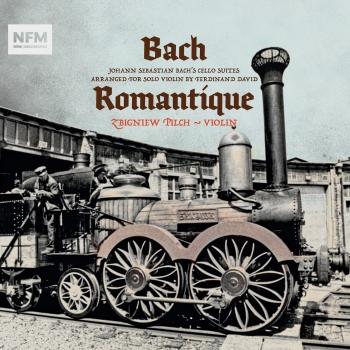
Enlightened Virtuoso Zbigniew Pilch
Album info
Album-Release:
2017
HRA-Release:
22.05.2017
Album including Album cover Booklet (PDF)
- Johan Helmich Roman (1694-1758): Assaggio in C Minor, BeRI 310:
- 1 I. Grave 04:25
- 2 II. (Allegro) 04:42
- 3 III. (Lento) 02:52
- 4 IV. (Presto) 03:21
- Federigo Fiorillo (1755-ca. 1823): 36 Caprices for Violin, Op. 3:
- 5 No. 32 in E-Flat Major 02:49
- Ivan Khandoshkin (1747-1804): Violin Sonata in G Minor, Op. 3 No. 1:
- 6 I. Marcia. Maestoso 05:09
- 7 II. Allegro assai 06:08
- 8 III. Andante con variazioni 11:30
- Niccolò Paganini (1782-1840): 24 Caprices for Solo Violin, Op. 1, MS 25:
- 9 No. 23 in E-Flat Major 06:23
- Friedrich Wilhelm Rust (1739-1796): Partite for Violin Solo in D Minor:
- 10 I. Grave 02:59
- 11 II. Fuga 05:15
- 12 III. Gigue 01:28
- 13 IV. Ciacona - Gigue 04:02
- 14 V. Courante - Gigue 03:35
- Georg Friedrich Händel (1685-1759): Rinaldo, HWV 7:
- 15 Lascia ch'io pianga (Arr. Z. Pilch for Violin) 04:36
Info for Enlightened Virtuoso
The 18th century saw thorough and radical social, cultural and political changes. In a nutshell, we can define them as an attempt to free scientific, social and artistic research from the centuries-old patronages, such as those bestowed by the church and aristocratic or royal courts. Notwithstanding any evaluations of this period, the social changes led to, inter alia, the Great French Revolution, which abolished the established social order for the first time in Europe’s history. Scientific research led to ground-breaking discoveries and inventions, such as the steam engine, and in consequence resulted in massive changes in human migration, industrial development and, what is perhaps the most typical feature of the 19th century, the speed of travelling thanks to the use of railway. The 18th-century artists, such as Bach, Haydn, and Mozart, wearing servant uniforms for the most part of this century, towards its end made efforts to emancipate themselves as artists (Beethoven was largely an embodiment of such emancipation). In the following century this trend led to another extreme – the universal cult of the artist as envoy of the gods. The Enlightened Virtuoso is an attempt to show the artist-performer beginning to get independent in the second half of the 18th century by breaking up with the stereotype of a musician as a servant and heading towards artistic independence, in this case of the violin virtuoso soloist. The presented repertoire is a cross-section of styles in the Enlightenment Europe. On the one hand, one can still discern the reminiscences of the artful and ornate Baroque style and Sturm und Drang or Empfindsamer Stil inspirations, and on the other one can observe the influence of the Classical style and the first glimmers of the upcoming Romanticism. The composers are the great violinists active across Europe – Ivan Khandoshkin worked in Sankt Petersburg, Johan Helmich Roman in Stockholm, Friedrich Wilhelm Rust in Germany, Federigo Fiorillo, and Niccolo Paganini in Italy. Thus we get a full range of music in the second half of the 18th century, with all its richness and diversity. The recording was made by Zbigniew Pilch on a historical instrument with gut strings. The bow used is a copy of a bow from the turn of the 18th century. The interpretation of pieces is largely based on historical records concerning performance principles, including the use of articulation and fingering, adequate for performance practice in the second half of the 18th century.
Zbigniew Pilch, violin
Zbigniew Pilch
is one of Europe’s most outstanding baroque violinists, an artist of broad interests in the whole of instrumental music from the 16th to the 21st century, with particular emphasis on the violin virtuoso idiom. He plays both contemporary and baroque violin, viola and viola d’amore. Pilch performs as a soloist, chamber musician and conductor.
Zbigniew Pilch graduated from the Instrumental Faculty of the Academy of Music in Krakow, where he was mentored by Zbigniew Szlezer. Simultaneously, he was specializing in playing the baroque violin under the direction of Zygmunt Kaczmarski.
Pilch worked with almost all existing early music ensembles in Poland, and for many years was a member of the Sinfonietta Cracovia orchestra. At present, the artist performs throughout Europe and other continents with such excellent ensembles as Battalia (Finland), Concerto Copenhagen (Denmark), Al Ayre Español (Spain), Musica Florea (Czech Republic), or Collegium Vocale Gent (Belgium).
Zbigniew Pilch has been the concertmaster for the Wrocław Baroque Orchestra from the group’s very debut. As an instrumental soloist he cooperates with many other ensembles, such as the Warsaw Chamber Opera and the New Chamber Orchestra, whereas in his work as a conductor he collaborates with Wrocław Philharmonic Orchestra, Elbląg Chamber Orchestra, Lower Silesia Philharmonic Orchestra, Gdynia Chamber Orchestra ‘Sinfonia Nordica’, to name a few.
Furthermore, Zbigniew Pilch boasts an extensive and varied tutoring career – he teaches baroque violin and viola at the Academy of Music in Krakow. Pilch is also one of the tutors conducting master classes at the cyclical International Summer Academy of Early Music in Lidzbark Warmiński.
Zbigniew Pilch was the first in Poland to perform Vivaldi’s, Locatelli’s, Haydn’s and Janiewicz’s virtuoso concertos on baroque violin. The musician is also actively recording: in 2007 he released an album containing the virtuoso violin concertos by Feliks Janiewicz, which were recorded by Pilch in collaboration with Musicae Antiquae Collegium Varsoviense’s Early Instruments’ Ensemble of the Warsaw Chamber Opera and conducted by Kai Baumann (PMC 057). In 2009 the artist released another album, this time includingSymphonies No. 103 and 104 by Joseph Haydn, performed by the Wrocław Philharmonic Orchestra and conducted by Zbigniew Pilch (DUX 0751). Together with the Wrocław Baroque Orchestra, Pilch recorded Symphony No. 6, 7, 8 by Joseph Haydn (ACD 167) andSymphonies, an album presenting compositions of Koželuh, Reicha and Voríšek (ACD 148). The latter record was granted with a Fryderyk Award in 2011.
Booklet for Enlightened Virtuoso











